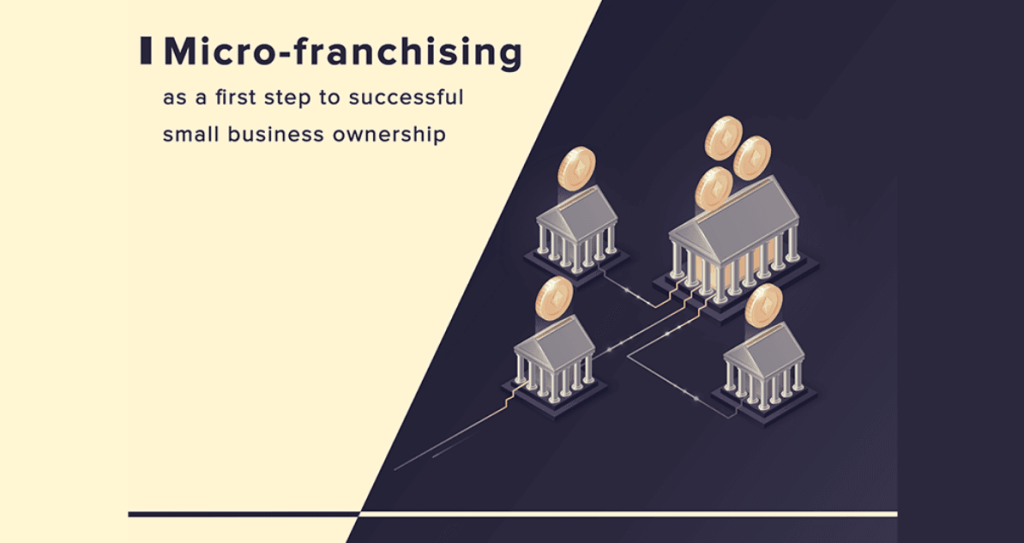
Brief Review: The Origins and History of Micro-Franchising
Introduction
Micro-franchising is a business model that adapts the principles of traditional franchising to small-scale enterprises, particularly in developing countries; but can be applied just as well in developed countries. This model aims to provide economic opportunities to individuals at the base of the socio-economic pyramid by offering them a proven business framework that can be easily replicated. This case study explores the origins and history of micro-franchising, evaluates its effectiveness compared to traditional franchising, and examines its impact both within and outside the United States.
Origins and History of Micro-Franchising
Micro-franchising emerged as a response to the limitations of traditional micro-enterprises, which often struggle due to a lack of business acumen, resources, and support. The concept gained traction in the early 2000s, inspired by the success of microfinance and microcredit initiatives. One of the earliest and most influential examples of micro-franchising can be traced back to Bangladesh’s BRAC (Bangladesh Rural Advancement Committee), which developed a system of community health promoters known as shasthya shebikas1.
Jason Fairbourne, Stephen W. Gibson, and W. Gibb Dyer from Brigham Young University’s Marriott School of Management were pivotal in formalizing the concept of micro-franchising. Their work highlighted the potential of this model to create sustainable economic opportunities for the world’s poorest populations1. Micro-franchising has since been implemented in various sectors, including healthcare, agriculture, and retail, with notable examples such as VisionSpring in Bangladesh, Fan Milk Limited in Ghana, and Living Goods in Uganda1.
Comparison and Contrast: Micro vs. Traditional Franchising
To evaluate micro-franchising, it is essential to compare it with traditional franchising. Both models share the core principle of replicating a successful business model, but they differ significantly in scale, target audience, and operational dynamics.
1. Scale and Investment: Traditional franchising typically involves substantial financial investment and targets well-established markets. Franchisees often need significant capital to cover franchise fees, setup costs, and ongoing royalties2. In contrast, micro-franchising requires minimal investment, making it accessible to individuals with limited financial resources. This low-cost entry point is crucial for enabling entrepreneurship among the economically disadvantaged1.
2. Target Audience: Traditional franchising usually appeals to experienced entrepreneurs or investors looking to expand their business portfolios. Micro-franchising, however, targets individuals at the base of the pyramid who may lack formal business training. The model provides these individuals with the necessary training and support to run their micro-enterprises successfully1.
3. Support and Training: Both models emphasize support and training, but the extent and nature of this support differ. Traditional franchisors offer comprehensive training programs, marketing support, and ongoing assistance to ensure brand consistency and operational efficiency2. Micro-franchisors, on the other hand, focus on providing basic business skills, product knowledge, and community-based support systems. This tailored approach helps micro-franchisees overcome the unique challenges they face in their local contexts1.
4. Social Impact: While traditional franchising primarily aims at profit maximization, micro-franchising has a dual focus on profitability and social impact. Micro-franchises are often designed to address specific social needs, such as healthcare, education, or access to essential goods and services1. This social mission is integral to the micro-franchising model, making it a powerful tool for poverty alleviation and community development3.
Evaluation in the US and International Contexts
Inside the US: In the United States, the micro model for franchising has been explored as a means to support marginalized communities and foster local entrepreneurship. Programs like the Urban Microfranchise Initiative have aimed to replicate the success of international micro-franchises in urban American settings. These initiatives focus on providing low-income individuals with the tools and support needed to start their own businesses, thereby promoting economic self-sufficiency4.
Outside the US: Internationally, micro franchising model has shown significant promise in developing countries. In regions where traditional employment opportunities are scarce, micro-franchising offers a viable pathway to economic empowerment. For example, the Village Phone Program by Grameenphone in Bangladesh has enabled thousands of women to become micro-entrepreneurs by providing them with mobile phones and training to offer telecommunication services in their communities1. Similarly, Living Goods in Uganda has created a network of health entrepreneurs who deliver essential health products and services to underserved populations1.
Conclusion
Micro-franchising represents a transformative approach to entrepreneurship, particularly for individuals at the base of the socio-economic pyramid. By adapting the principles of traditional franchising to a smaller scale and focusing on social impact, micro franchising model has the potential to drive significant economic and social change. While traditional franchising remains a powerful business model for expanding established brands, micro-franchising offers a unique solution to the challenges faced by the world’s poorest populations. Its success in both the US and international contexts underscores its versatility and effectiveness as a tool for sustainable development.
1: Wikipedia, “Microfranchising” 2: Forbes, “The History Of Franchising, And Why Today It’s Easier Than Ever” 3: Kellogg School of Management, “Micro-Franchising: Application and Success Factors” 4: Stanford Graduate School of Business, “Survival and Growth: Franchising in Africa”
